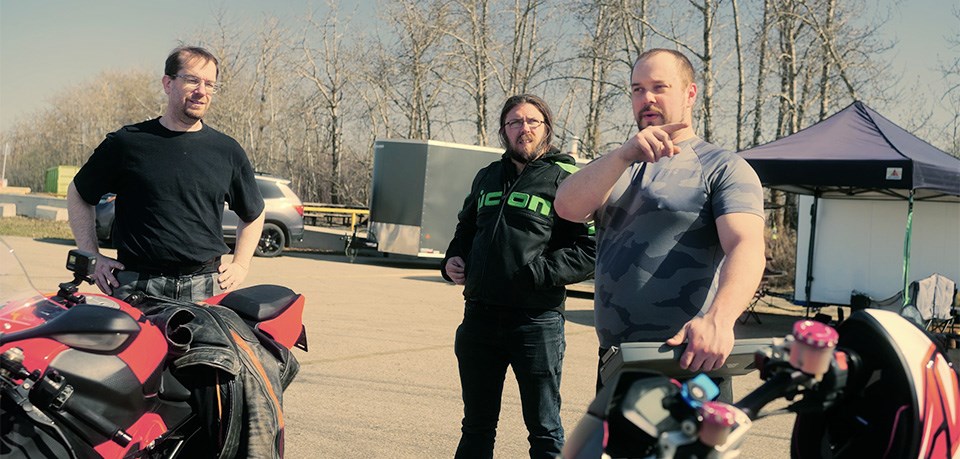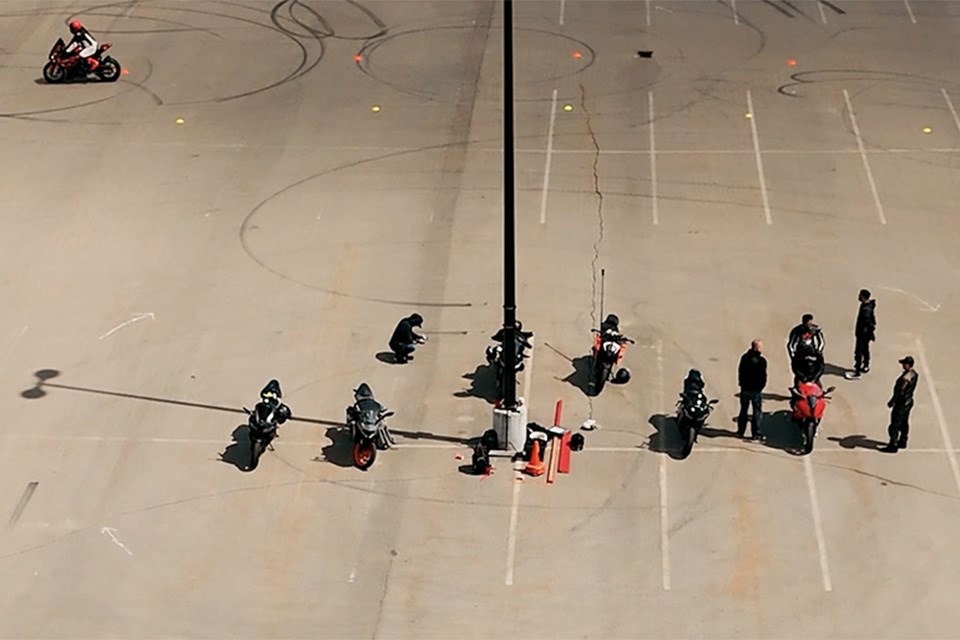Part 2 – Motorcycle Safety: A Unique Look at the Risks
When the days turn warm and the open road calls, vehicles must share the road with motorcycles. It’s an interesting dynamic that, without understanding on both sides, can result in tension. This three part series takes a look at the story behind Edmonton’s ghost bike program, rider safety for real-life situations, and concludes with a popular road trip filled with destinations that warmly welcome members of the bike community.
Leeroy Victor has been riding for a very long time. When he got the idea to formalize a renting and mentorship program for motorcycle riders, he based it on many factors, including his own experiences.
“Moto Instincts,” he says of the program, “at the inception was a list of what I coined the ‘the golden rules or riding.’ Now it’s been formalized into ‘the deadly risks of riding’ and includes direct causes of motorcycle crashes. That is the bedrock of what started all the different concepts within the brand.”
As a rider himself, Victor feels that a big part of the safety conversation should be around a skills bubble that includes a very wide variety of risks, including wildlife and environmental factors, mindset before one gets on the bike, types of roadways and more. His mentoring includes when to be cautious and change plans on the go to rapid velocity changes and evasive maneuvers when the rider has literally a second of time to react to what may be an imminent crash.
He explains, “The thing is, as risk increases, it doesn't necessarily mean that you will have an accident. It just means that if you do, the consequences are higher. When you're riding, it's not just riding a motorcycle. There's a lot more going on. As your skill bubble grows, you can efficiently handle more risks. Not that that's the goal – to ride in a way to handle more risks – but it's just the way that it works. In this day and age, when you have inexperienced drivers, people on their phones, and distractions, the faster you stop, the more you're also relying on the actions of someone else behind you. To come to a stop and getting rear-ended in a car is bad enough; but on a bike, you can get pancaked between two vehicles. A concept built into the mentoring is not just stopping in a short distance, but also agility – knowing when to stop, swerve, or accelerate a little. You must be ready for everything.”
Victor is in favour of rider safety across the board; he also knows that skills development is not just for new riders. Even trained riders don’t always have experience with different roadways or in areas where wildlife like moose or bears are more prevalent. To help with such scenarios, Moto Instincts creates drills and patterns similar to the risks the rider will be facing, then coaches the rider through at a pace that matches and grows the skill level.
As noted in Part 1, Ghost Bikes, this year has seen a disproportionately high level of ghost bike placement when compared to the past two years. While many factors go into that stat, one thing that cannot be ignored is stunting for social media views.
“The more risk-taking types of riders, those are the ones who need education the most,” Victor points out. “A lot of the things I know are because I'm a spirited rider myself. I think that that demographic of the ones who like to push limits and ride fast, the best place obviously is the track. But not everybody wants to go to the track and some people are just going to ride the way that they want to ride. I don't endorse public stunting or racing or aggressive cornering or anything like that, but people are going to do it no matter what I say. I would rather a person who's going push the limits be mentored so they don't wrap themselves around a pole and part of the mentoring is incorporating a heavy risk management component.”

One of the risks that gets overlooked is mental state. As an example, Victor shares a personal story.
"I crashed leaving work after a night shift. On that particular day I was in a bad mood. I left work tired and mad and I was approaching one of those intersections that takes forever to change if you don't make it. I rushed it.”
That was a mistake.
“Charging an intersection is one of the deadly risks of riding and riding with an unfit mental state is another one.”
He made it out with a dislocated thumb, fractured wrist, and real-world example of why mindset must be taken into consideration before hopping on the bike.
“Habit and mindset are ‘deadly risks of riding’ because they are very influential. There is a drastic decrease in your ability to think, focus, and operate with a poor mental state. The worst one is probably anger because when angry, you are much less risk averse. However, another huge risk is riding when sad. Feeling dejected, tuned out, or anxious affects your ability to make decisions and act with conviction.”
Surprisingly, euphoria is also a mental state risk.
“If you are listening to upbeat music you can get into a state that has you driving faster and before you know it, you are operating outside of your skill bubble. You notice that in your car – not realizing you are speeding because it’s such a good song!”
More little-considered risks include exhaustion and fitness level.
“Riding a motorcycle takes quite a bit of dexterity. You have to use all of your limbs. You’ve really got to be dialed in and operating at a high level to ride safely and properly.”
When asked what the biggest risk in riding is, Victor says, “yourself.”
“We learn from making mistakes but when riding, mistakes can cost you fingers, amputation, thousands of dollars, and your life. With motorcycles, doing things by chance is not smart. Skills development, whether for a new gor an experienced rider, correlates to risk reduction.”
Learn more about Moto Instincts online.
Nerissa McNaughton is a freelance writer and a contributor to Great West Media. This story was written for Great West Media's Hot Summer Guide advertising feature. The Hot Summer Guide is a special feature about summer activities, bucket list adventures, staycation options, road trips, attractions, events, and road trip-worthy food & beverage destinations across Alberta. It is not written by and does not necessarily reflect the views of the editorial staff.



